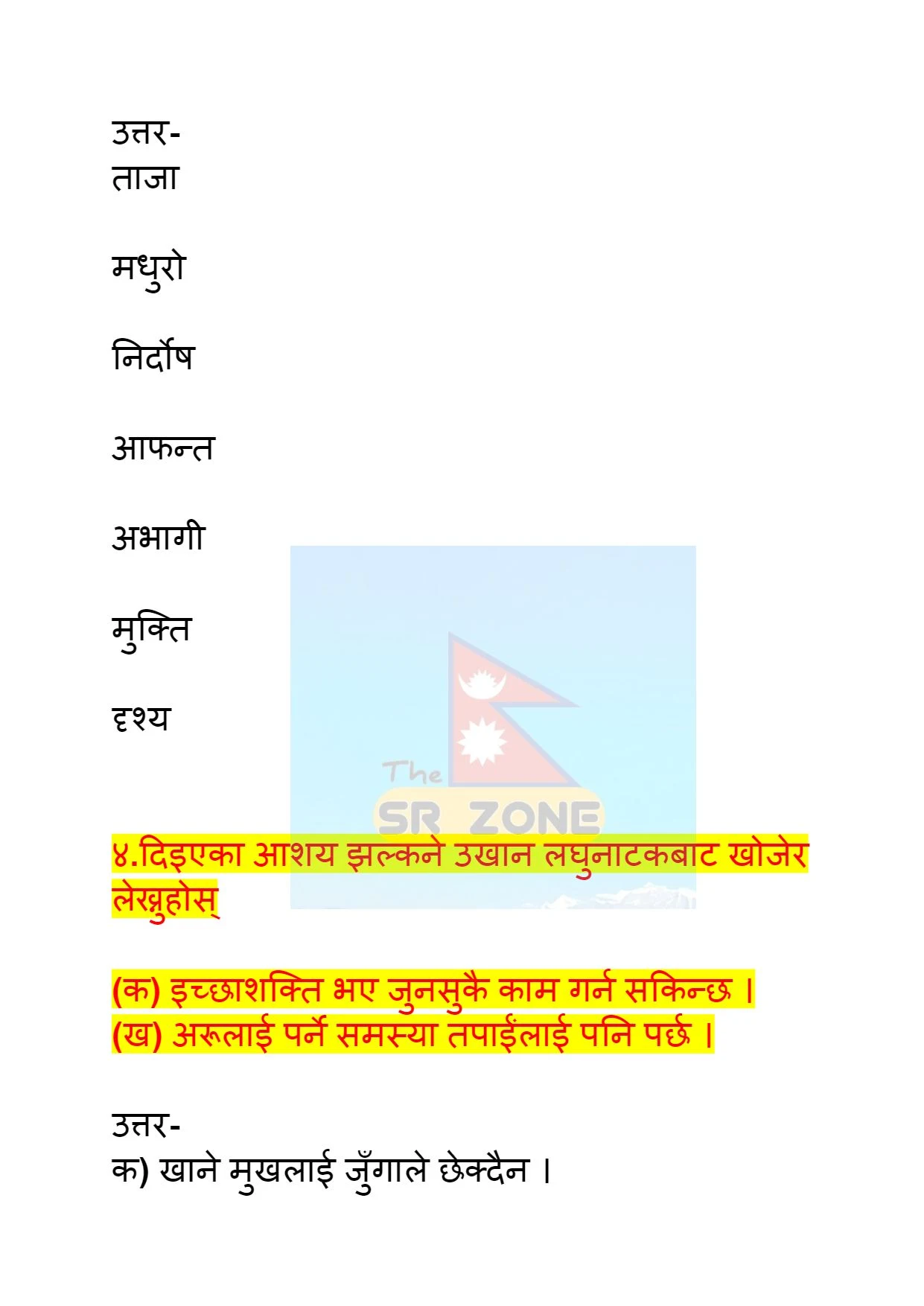Lau Aayo Taja Khabar Class 11 Exercise – Nepali Unit 8 Questions, Answers & Summary
Author: Shriram Lamichhane
"Lau Aayo taja Khabar" in class 11 Nepali book unit 8 Exercise Notes is in this article.
Also Read : Safaltako Katha Class 11 Exercise
Also Read : Tyo Feri Farkala Class 11 Exercise
Also Read : Class 11 Nepali Notes 2077 Guide App Download
Lau Aayo Taja Khabar Class 11 Exercise – Unit 8
Lau Aayo Taja Khabar or "The News has Come" is a social-oriented play and lesson from Class 11 Compulsory subject (Nepali) second book. This Surendra Nakarmi-written flick is a satire on how drug menace is spreading like a wild fire among the new generation and how media, politics and parenting are equally irresponsible in this regard.
Here's what you'll find in this article:
- Exercise Questions and Grammar Solutions
- Complete Summary of the Drama
- Character Analysis
- Thematic Explanation and Moral Lessons
It is a one-act satire-cum-symbolic play on the negative impact of drug addiction among the youths. The title, which means “Here Comes Fresh News,” is an ironic comment on the ways the media sensationalizes tragedy instead of stopping it.
We have covered all the exercises and questions of Lau Aayo Taja Khabar in our class 11 class 11 Nepali notes.
Key Plot Points:
- The plot concerns a boy hawking newspapers bearing the headline "Youth Killed By Dope!"
- Dahri Baba, a knowing but presumably homeless old man, wonders why anyone would refer to the news of such a tragedy as “fresh.”
- Real news, he believes, should create awareness rather than profit from suffering.
- Vivek plays the voice of millions and millions of drug addicted commoners of today, as the play points accusing fingers at the neglect that parents, society, and media also turns a blind eye to.
Character Overview – Lau Aayo Taja Khabar
1. Dahri Baba
The playwright's leading man and spokesman
Though old and homeless, he is highly aware of social, political, and moral issues
Biting way of highlighting societal wrongs through sarcastic and logical observations
Champion of youth reform, whipped-clean journalism, and good parenting
2. Newspaper Seller Boy
A picture of how media has become commercialized today
Spreads tragic news for sales
Is not aware of the social issues behind it all
He introduces himself as Dahri Baba’s agent of inspiration
Themes and Message
- Youth Drug Intake: The drama loudly protests against the growing aspects of addiction to narcotics, such as pot, heroin and others.
- Parenting Family Irresponsibility: Parents care about money more than kids' mental health.
- Journalism Failure: News a product even when about death, loss
- The collective process instead: It is not the work of families, communities and institutions to transform lives.
- The use of Satire: The humor and irony are used to reveal the social criticism.
Analysis: Why the Title Is Important
The play’s title, Lau Aayo Taja Khabar, (Here Comes Fresh News) sounds like a common newspaper term but is actually used ironically. The play’s message: News of a death by drug addiction can never be said to be “fresh” or “positive.” Instead, the new and good news should be about awareness, recovery and prevention.
Social Commentary
The writer calls on society to:
- Also, stop sensationalizing tragedies into news.
- Declare youth drug addiction a national emergency and take necessary actions.
- Make sure journalism is responsible and educative, not exploiting.
- Let parents invest more time figuring out what their children really want in terms of mental and emotional support.
- Community-based fights against addiction need to be bolstered.
Moral Lessons
- News should uplift, not sensationalize.
- Individuals can’t alone solve drug problems, it takes all of us.
- Real education involves the development of one’s character, emotional growth and moral enrichment.
- Parents are the first responders in preventing youth addiction.
Conclusion
More than mere play It is not just a play “Lau Aayo Taja Khabar”. It’s a rallying cry for families, media, educators and policymakers. Instead it reminds readers to look beyond screaming headlines and find the real crisis — a crisis whose victims, by all accounts, need guidance and understanding, not judgment.
In reading this unit and completing its exercises, students derive moral, social, and emotional lessons — not just literature-based ones.
Also Read: Class 11 Nepali Complete notes
You can watch this youtube video as well for "lau aayo taja khabar" explanation:




















